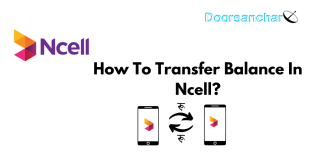 The GSMA has launched a new online tool that measures the ability of more than 130 countries worldwide to connect offline citizens to the mobile internet. The GSMA Mobile Connectivity Index measures each country on the four key enablers for driving mobile internet adoption: infrastructure; affordability; consumer readiness; and content. The tool aggregates best-in-class data from multiple sources and is designed to support the efforts of the mobile industry and the wider international community to deliver on the ambition of universal access to the internet.
The GSMA has launched a new online tool that measures the ability of more than 130 countries worldwide to connect offline citizens to the mobile internet. The GSMA Mobile Connectivity Index measures each country on the four key enablers for driving mobile internet adoption: infrastructure; affordability; consumer readiness; and content. The tool aggregates best-in-class data from multiple sources and is designed to support the efforts of the mobile industry and the wider international community to deliver on the ambition of universal access to the internet.
“Already more than 3 billion people worldwide are accessing the internet via mobile, but this still leaves more than 4 billion people offline and excluded from the powerful opportunities for social and economic development that the mobile internet enables,” said Mats Granryd, Director General of the GSMA. “Mobile is the primary enabler of connectivity in developing world markets where the high cost of deploying fixed-line networks means that internet penetration is low”.
The launch of the GSMA’s Mobile Connectivity Index will provide valuable insights that will inform projects designed to support the ambition of universal access to the internet”
According to GSMA Intelligence, there were approximately 3.2 billion people accessing the mobile internet at the end of 2015, representing about 44 per cent of the global population. Among these users, about a third were accessing the internet using 2G networks and two-thirds were using mobile broadband (3G/4G).
This leaves approximately 4.16 billion people, about 56 per cent of the global population, still not on the mobile internet. Among this segment, 2.5 billion people (34 per cent of the global population) live within the footprint of a mobile broadband network but do not access services, while approximately 1.6 billion (22 per cent) live outside of a mobile broadband network footprint.
Measuring Enablers Using the GSMA Mobile Connectivity Index
The GSMA Mobile Connectivity Index is an analytical tool that measures the performance of 134 countries,  representing more than 95 per cent of the world’s population, against the four key enablers that are essential to driving mobile internet adoption:
representing more than 95 per cent of the world’s population, against the four key enablers that are essential to driving mobile internet adoption:
Infrastructure – the availability and quality of high performance mobile internet network coverage. Without network coverage, people cannot get online, and without high-performing networks it is more difficult to access the full potential of the internet.
Affordability – the availability of mobile services and devices at price points that reflect the level of income across a national population. Aside from prices and incomes, affordability is also affected by the level of taxation, as well as inequality – if income distribution is skewed towards a small proportion of the population, the mobile internet will remain unaffordable for many people.
Consumer Readiness – citizens with the awareness and skills needed to value and use the internet. Without the necessary skills and supporting cultural environment, individuals may not understand how to use the mobile internet or appreciate how it can benefit them.
Content – the availability of online content and services that are accessible and relevant to the local population. Consumers are less likely to connect to the mobile internet unless there is online content and services that are relevant and would be of benefit to them.
Scores for each of these four key enablers are available for each country and combined to produce a single composite measure for a given country, reflecting the strength of the foundations to support widespread adoption of the mobile internet. The scores will be updated on an annual basis.
 Doorsanchar Nepalese Telecom News, Smart Phones, Tablets, Mobiles, Gadgets, ICT & Telecom issues, Nepal Telecom, Ncell, Teleosonera, STM Telecom Sanchar, Nepal Satellite Telecom, Hello Mobile, Internet in Nepal, Business on Telecom Sector in Nepal, Views, Blogs, ICT News, Views, Reviews from Nepal, Mobile Prices in Nepal, Buy a Mobile in Nepal, Comparative mobile prices, Smart Phone in Nepal, Buy a smart phone in Nepal, Nepal Cheapest Mobiles, Nepal Doorsanchar Company Limited, Nepal Telecom News, smart, NTC, Namaste, GPRS, ADSL, internet, DSL, IP, Gramin Telecom, Rural Telecom, iPhone, Apple in Nepal, Sewa Telecom, Reynolds Holdings, SMS, MMS, Free Phone, CDMA, internet in Nepal, Nepal Phone, Free Phone Nepal, Website hack, WWW, http://, Telecom Issues, Telecom Magazines, Huwai, ZTE, Samsung, Motorolla, Panasonic, Smart TV, configure ADSL, Subscribe internet, Cable, DSL, Internet Speed Test, Test My Net Speed, Online Cinema, Free Calling Card, Nepal Tech, Tech Nepal, Tech 2 Nepal, Travelling Nepal, News Nepal, Nepal News, ekantipur, onlinekhabar, nagariknews, mysansar, Camera, Tablet, LTE, Ultrabook, E Cards, FTP, Google, Cloud, Cloud computing, cloud service, Mac, Free software, software freedom, downloads, download free software, Nepal software, play, google play, android apps, applications, IOS, Apple, Facebook, google.com, facebook.com, social networking, domain, free domain, Nepal Website, Website making, website design, free calling cards, chat, Nepal Chat, Nepalese websites, Traveller sites in Nepal, Wallpapers, Nepalese wallpapers, New Walpapers, The Pirates bay, download software, Free website making, eticketing, eservice, egovernance in Nepal, egov, Nepal electronics good, Mobile Expo in Nepal, Mobile Market, Nepal Mobile Price, Nepal Tech News, Nepal Telecom News, Nepal Doorsanchar News, All telecom News, Tech News, Living with ICT and Telecom, Lifestyle, Ebooks, ereadings, elibrary, free books online, free software online, online media
Doorsanchar Nepalese Telecom News, Smart Phones, Tablets, Mobiles, Gadgets, ICT & Telecom issues, Nepal Telecom, Ncell, Teleosonera, STM Telecom Sanchar, Nepal Satellite Telecom, Hello Mobile, Internet in Nepal, Business on Telecom Sector in Nepal, Views, Blogs, ICT News, Views, Reviews from Nepal, Mobile Prices in Nepal, Buy a Mobile in Nepal, Comparative mobile prices, Smart Phone in Nepal, Buy a smart phone in Nepal, Nepal Cheapest Mobiles, Nepal Doorsanchar Company Limited, Nepal Telecom News, smart, NTC, Namaste, GPRS, ADSL, internet, DSL, IP, Gramin Telecom, Rural Telecom, iPhone, Apple in Nepal, Sewa Telecom, Reynolds Holdings, SMS, MMS, Free Phone, CDMA, internet in Nepal, Nepal Phone, Free Phone Nepal, Website hack, WWW, http://, Telecom Issues, Telecom Magazines, Huwai, ZTE, Samsung, Motorolla, Panasonic, Smart TV, configure ADSL, Subscribe internet, Cable, DSL, Internet Speed Test, Test My Net Speed, Online Cinema, Free Calling Card, Nepal Tech, Tech Nepal, Tech 2 Nepal, Travelling Nepal, News Nepal, Nepal News, ekantipur, onlinekhabar, nagariknews, mysansar, Camera, Tablet, LTE, Ultrabook, E Cards, FTP, Google, Cloud, Cloud computing, cloud service, Mac, Free software, software freedom, downloads, download free software, Nepal software, play, google play, android apps, applications, IOS, Apple, Facebook, google.com, facebook.com, social networking, domain, free domain, Nepal Website, Website making, website design, free calling cards, chat, Nepal Chat, Nepalese websites, Traveller sites in Nepal, Wallpapers, Nepalese wallpapers, New Walpapers, The Pirates bay, download software, Free website making, eticketing, eservice, egovernance in Nepal, egov, Nepal electronics good, Mobile Expo in Nepal, Mobile Market, Nepal Mobile Price, Nepal Tech News, Nepal Telecom News, Nepal Doorsanchar News, All telecom News, Tech News, Living with ICT and Telecom, Lifestyle, Ebooks, ereadings, elibrary, free books online, free software online, online media















